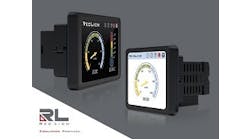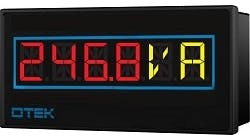Image courtesy of Stuart Miles at FreeDigitalPhotos.net
One of our most popular articles on control panel design comes from a 2014 article by Don Fitchett, president of Business Industrial Network, an industrial training company, on considerations for designers and builders of control panels to help ensure the panels' maintainability.In it, he outlines a hefty list of these considerations for designers and builders. Check them out below and read the full article, "Control panel design with maintenance in mind," here.
According to Fitchett, here are some considerations for designers and builders of control panels that will help ensure the panels' maintainability:
-
Have an outside-the-panel PLC communication port and fused 120-V outlet.
-
If it's an ac-powered PLC, have the line filter on 120‑V control power come off the transformer's secondaries.
-
Give customers a well-documented copy of the PLC program on CD or access to a cloud-hosted version.
-
Bring critical warning lights, such as PLC fault, battery, force comm, outside the panel or to the HMI.
-
Use aux contacts on E-stops and disconnects to detect them in the PLC and/or HMI.
-
Write predictive maintenance (PdM) logic in control to further enable reductions in your customers' unscheduled downtime.
-
Always break up logic into organized sub-routines for user ease of understanding and navigation.
-
Use agile programming designed to accommodate change.
-
Program preventive maintenance (PM) alerts, including electrical PM alerts, into equipment.
-
If PLC vendor software does not provide processor status bits and a word-structured view in a data table, create a subroutine that displays important processor status tags for easy troubleshooting. Be sure to include processor fault codes, real-time clock, first-scan status bit, etc.
-
Consider providing PLC program backup on a PLC EEPROM in a PLC that reloads the program automatically on memory fault.
-
Use fewer possible connections to reduce electrical PM time and increase overall reliability.
-
Clearly mark or label spare I/O on terminal blocks.
-
Ensure that service techs and start-up techs clearly document changes, and share that documentation with maintenance.
-
Have automated warning alerts if neutral-to-ground voltages exceed 2 V, or if there are other indicators of harmonics that can fault PLCs or other solid-state control devices.
-
In larger panels, include illumination for safety and ease of maintainability.
-
Consider panel-temperature monitoring, particularly an over-temperature warning.
-
Provide all manuals and documentation in searchable PDF digital format on CD and offer a cloud-hosted version.
-
Include recommended parts to stock and mean time between failures (MTBF) rate in manuals.
-
When MTBF is not of value (as for intermittent electro-mechanical devices), then provide the activations between failures (ABF) rate.
-
Monitor MTBF/ABF for key components and indicate warnings in the controls as the component approaches its MTBF/ABF.
-
Consider remote access for PdM measurements in panel designs, so measurements can be made without opening panel when possible.




